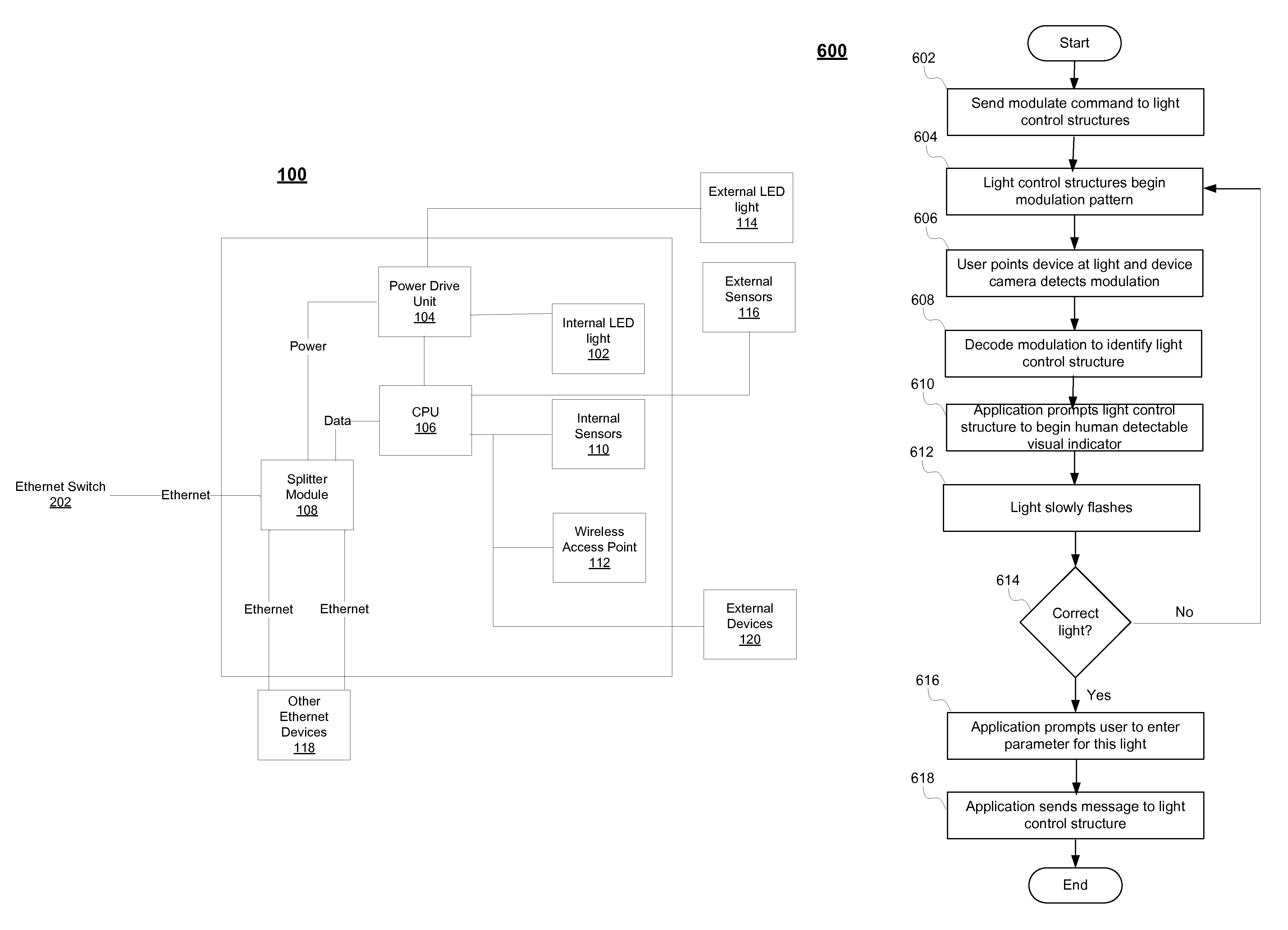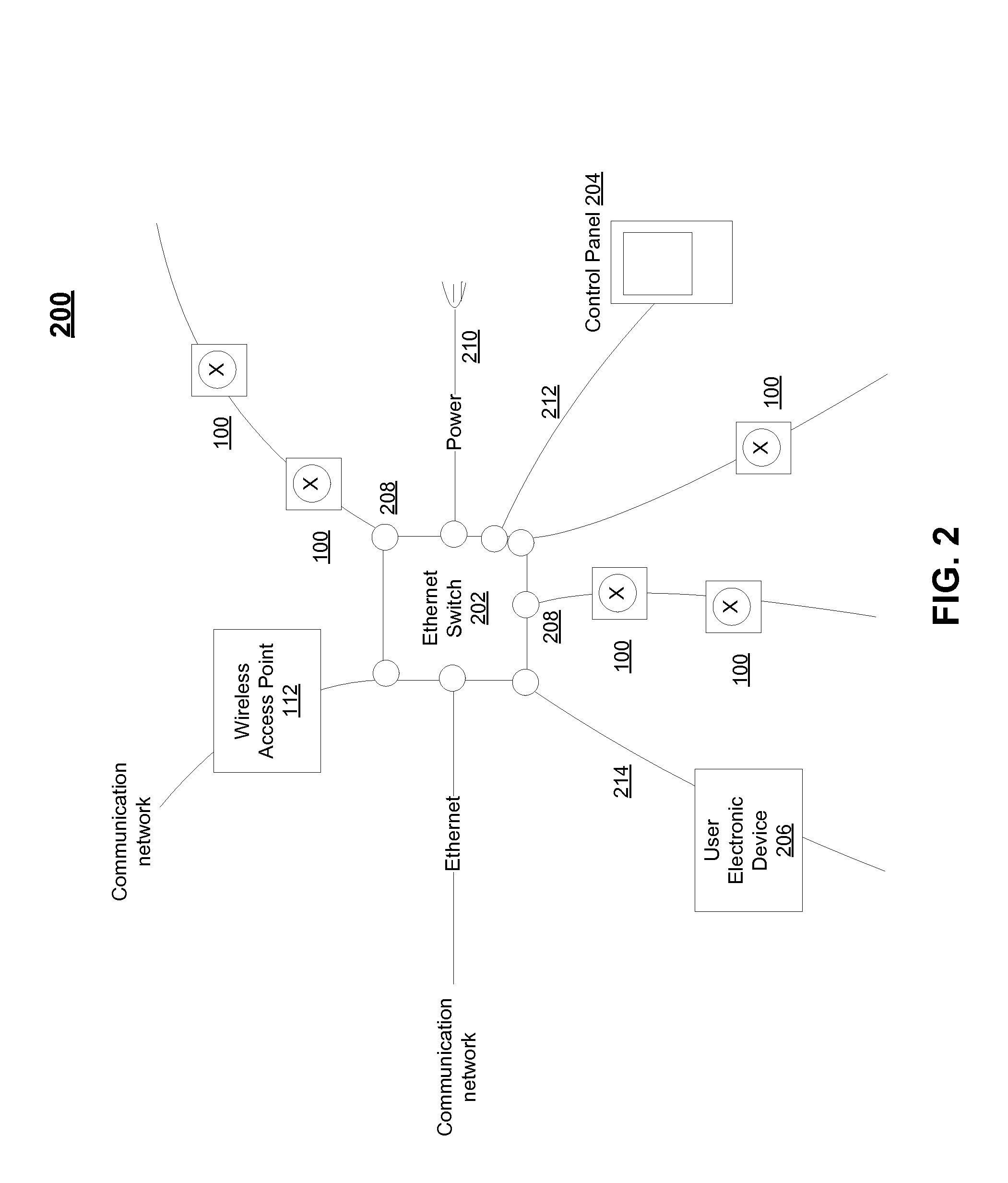Power over ethernet lighting system
a technology of power over ethernet and lighting system, applied in the direction of lighting apparatus, electroluminescent light sources, light sources, etc., can solve the problems of complex and costly addition or removal of light fixtures, complex and costly, and complicated electrical wiring systems in many buildings
- Summary
- Abstract
- Description
- Claims
- Application Information
AI Technical Summary
Benefits of technology
Problems solved by technology
Method used
Image
Examples
Embodiment Construction
[0021]FIG. 1 is a block diagram showing an exemplary light control structure 100 (also referred to as a light control module) that may be connected to an Ethernet cable. The light control structure 100 may optionally comprise a power drive unit 104, a central processing unit (CPU) 106, a splitter module 108, an internal LED light 102, and other components. While one internal LED light 102 is depicted in FIG. 1, any number of internal LED lights may be optionally affixed to the light control structure 100. One or more external lights 114 may also be utilized in the system and controlled by the light control structure 100. The external lights 114 may be used in conjunction with, or in place of, internal lights 102. The LED lights 102, 114 may be any type of standard LED light commercially available. Each LED light 102, 114 may comprise one or more individual lights.
[0022]Typically LED lights range from 1 watt to 25 watts (corresponding to the light output of incandescent bulbs of many...
PUM
 Login to View More
Login to View More Abstract
Description
Claims
Application Information
 Login to View More
Login to View More - R&D
- Intellectual Property
- Life Sciences
- Materials
- Tech Scout
- Unparalleled Data Quality
- Higher Quality Content
- 60% Fewer Hallucinations
Browse by: Latest US Patents, China's latest patents, Technical Efficacy Thesaurus, Application Domain, Technology Topic, Popular Technical Reports.
© 2025 PatSnap. All rights reserved.Legal|Privacy policy|Modern Slavery Act Transparency Statement|Sitemap|About US| Contact US: help@patsnap.com



